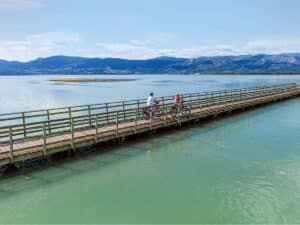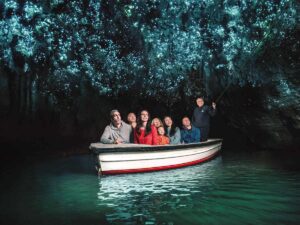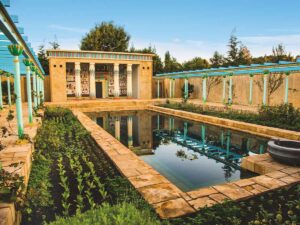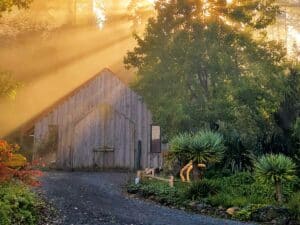On a recent visit to the historic Northland village of Matakohe, it flicked into my mind that when I was a teenager preoccupied with making sense of my future (a pursuit that’s still in progress), a local man called Mervyn Sterling was more usefully engrossed in making sense of the past.
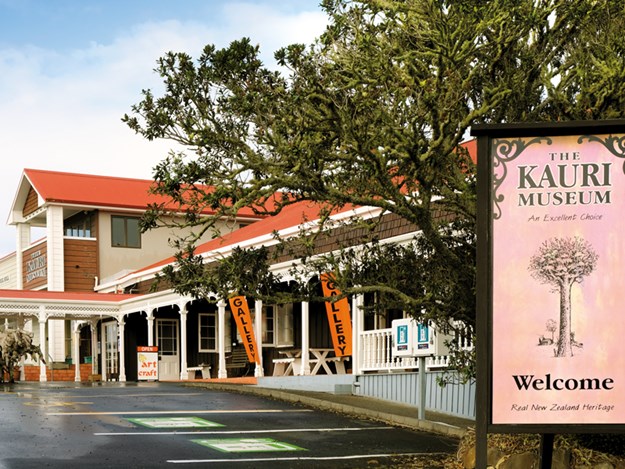
This extraordinary man, a farmer living close to the village, had a passion for saving industrial heritage and, in 1962, he opened a one-room museum to house his collection of relics from the district’s early settlement, when the hinterland of the Kaipara Harbour swirled with timber millers, gum diggers and lumberjacks.
Mervyn was also the founder of the Museum of Transport and Technology in Auckland.
Today that room is the museum’s souvenir shop and the items on show fill four-and-a-half thousand square metres. This makes the Kauri Museum the largest undercover display in Northland.
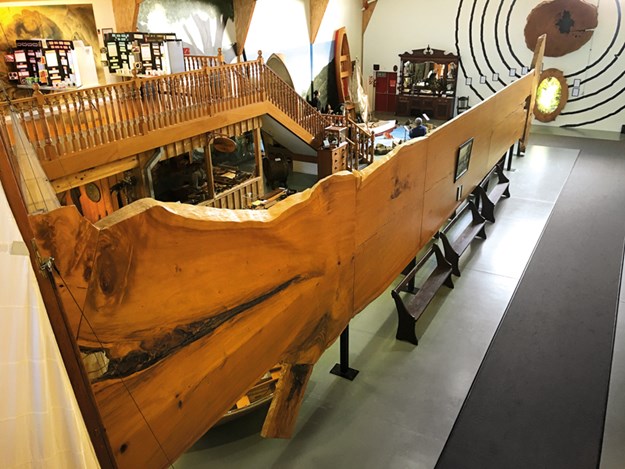 |
A grand slice of a king of the forest |
Dr Tracey Wedge joined the museum for three months in 1989, just three years before Mervyn died, but it gave her enough time to absorb his enthusiasm and his dedication to rural heritage. She is now the general manager of his remarkable legacy.
“Mervyn was a very admirable man, and fundamental to my own interest in cultural history,” she said. “We are very lucky he left us such treasures. He also loved people’s stories and recorded a lot of the oral histories in the museum.
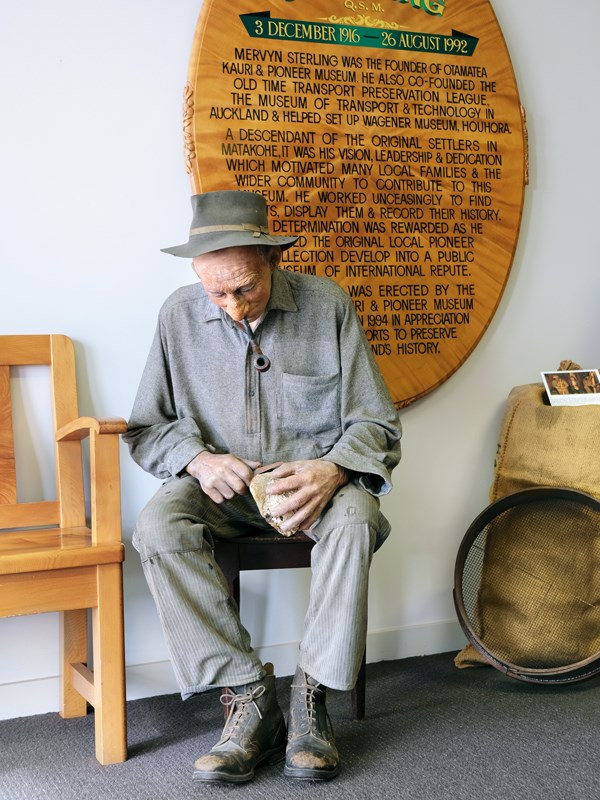 |
The effigy of Tatty, a gum digger who worked with Mervyn |
I particularly remember how he was able to inspire people to believe in what he was doing.” After my visit to the museum, I am one of them. At the entranceway sits the effigy of Tatty, a gum digger who worked with Mervyn.
He was so life-like I almost said hello. The museum’s first room houses a collection of beautifully crafted furniture made of rich, mellow, mottled kauri. There is also a tribute to the notable New Zealand documentary photographer Tudor Collins (1898-1970) and throughout the museum his photographs of the district help bring the pioneers’ lives into focus.
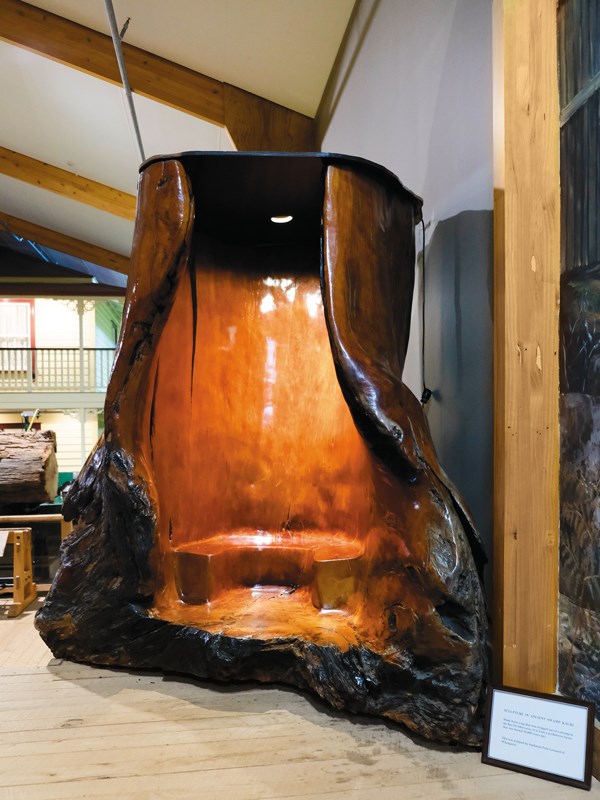 |
Innovative seating carved in a large kauri trunk |
These are further evoked by life-sized dioramas representing a kauri-built home of the 19th/early 20th centuries. The scenes are furnished in the original décor and the models so real I felt I should say ‘excuse me’ as I peered into their lives.
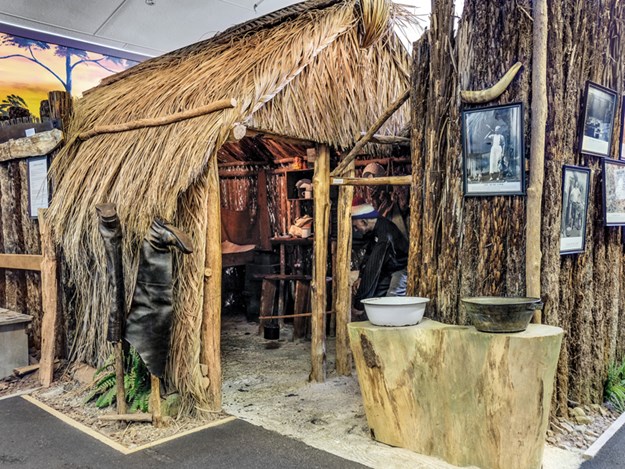 |
A gum digger’s hut made from woven nikau palm |
I’m not usually much interested in machinery, but Mervyn’s collection is impossible to take lightly. It took me an hour to transport myself through the machinery sections of the museum, past equipment used for the felling, logging and milling of those forest giants, and the living conditions of the gum diggers and millers.
He’d be pleased how well the relics are maintained. Some bits are in working order. A walk past the wood-turning lathe, the planing machine, the band, circular, bench, and breakdown saws is accompanied by the clacking and whirring of moving parts.
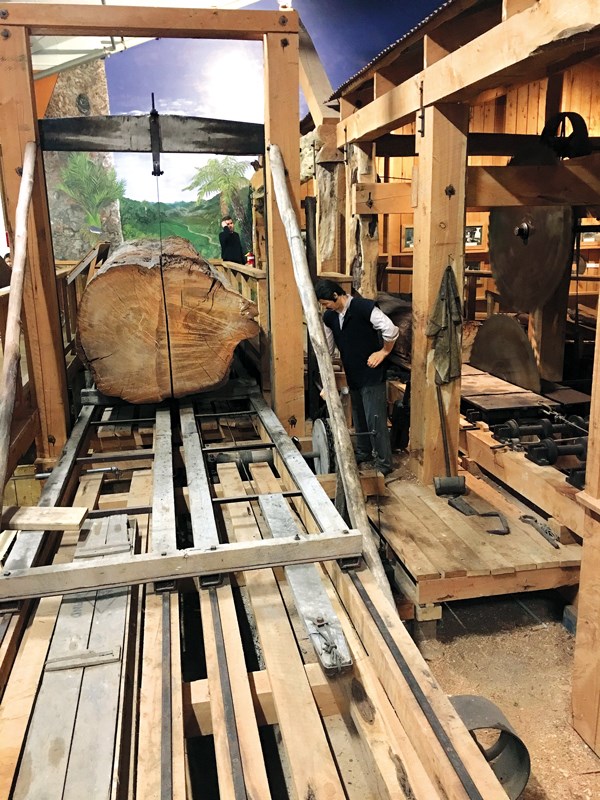 |
Parts of the old milling machinery are still able to be operated |
A huge timber jack was once able to move 10 tonnes of logs at a time. There was the immense Davey Paxman steam engine that once drove a whole sawmill. Mannequins operate these various components and their faces are modelled on living descendants of the early settlers, most of them great-great grandsons.
Another section of the museum is dedicated to kauri gum, displaying thousands of glowing shapes and sizes the colour of maple syrup. Kauri timber was also the king of boat-building material and there is a section dedicated to the extraordinary Logan Brothers.
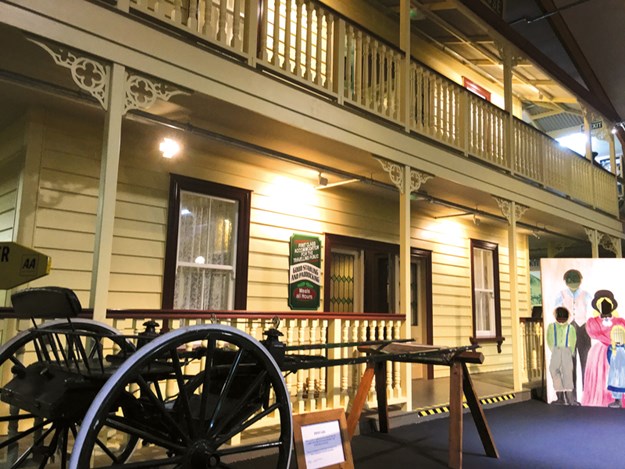 |
The replica of the old Otamatea Boarding house |
In another room is a replica of the two-storeyed Otamatea Boarding House, with tableaux vivants of early travellers and the rooms they’ve rented for the night. However, there was no room at the inn for us.
Instead we parked up in the museum’s car park, which is also a convenient Park Over Property. I hoped for a ghost or two, but nothing moved under the bowl of night.
Win a family pass to the Kauri Museum
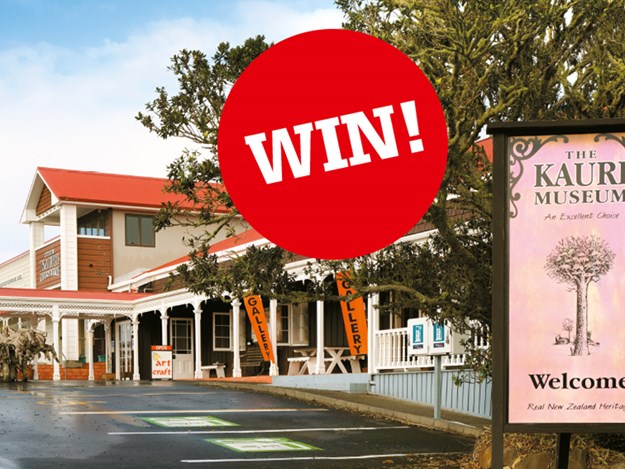
Be in to win a family pass to the Kauri Museum. Enter here before 23 August, 2019.

